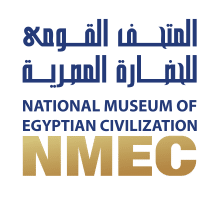A captivating chronological voyage that guides visitors through the epochs and can obtain an integrated idea of the Egyptian civilization and its most important achievements through its various eras, starting from prehistoric times and through the Pharaonic, Greek, Coptic and Islamic eras and to the modern and contemporary era in addition to the traditional culture that the Egyptians inherited or what is known as Popular Heritage.
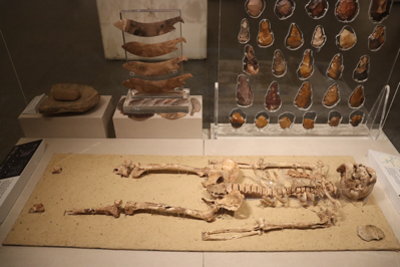
Nazlet Khater Skeleton
A remarkable archaeological find, this is the second-oldest Egyptian skeleton, with an astonishing age of 35,000 years, offering a unique glimpse into Egypt's ancient history.

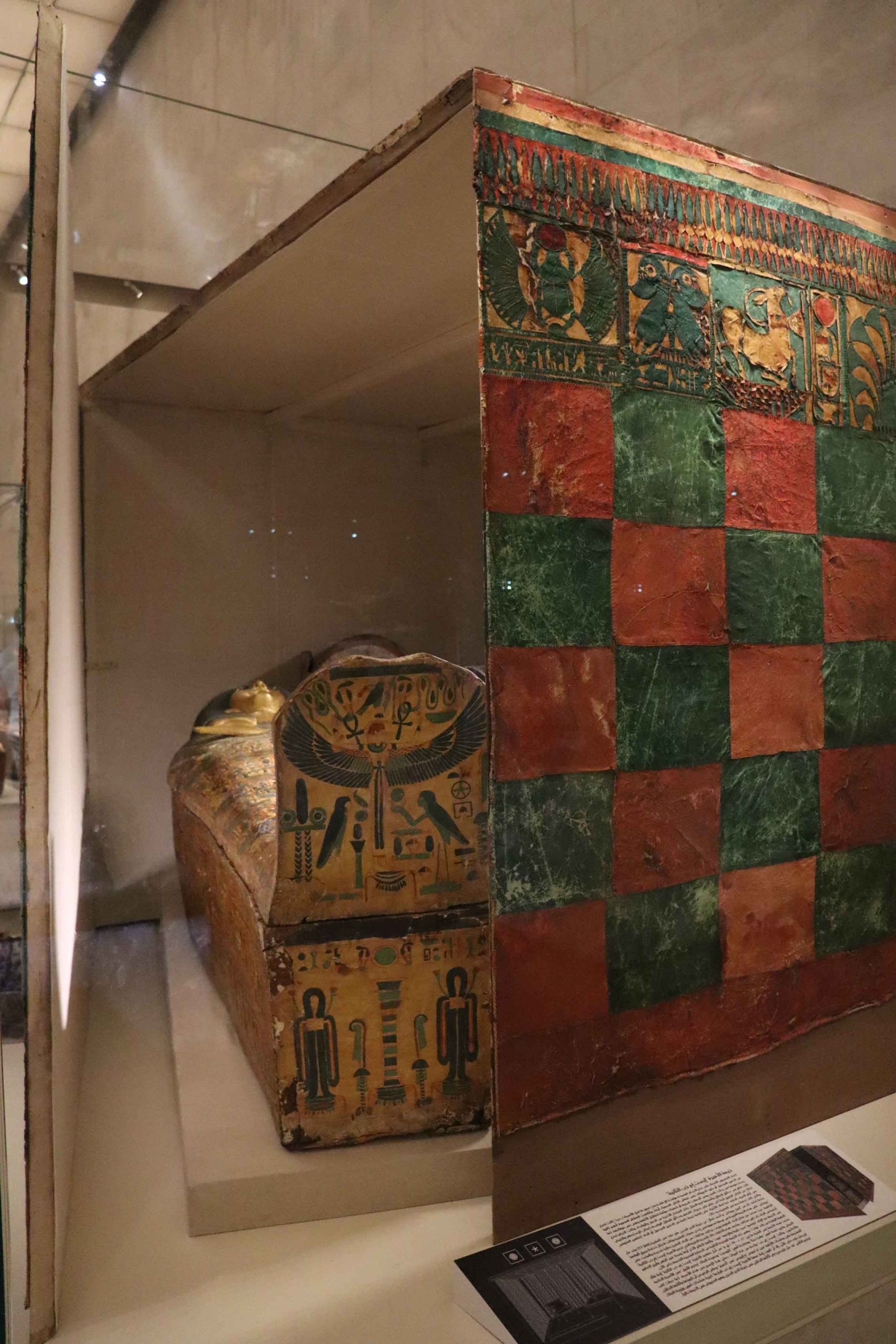
Tent of Purification
Delve into the past with Queen Isetemkheb II's ancient leather tent, meticulously employed for the sacred ritual of body purification before mummification. This remarkable artifact, dating back to around 1000 BC, connects us to the deep-rooted traditions of ancient Egypt.


Ekhnaton Statue
This monumental pillar statue, found in King Ekhnaton's temple at Karnak and dating back to around 1300 BC, stands as an enduring testament to the regal legacy of Egypt's past.

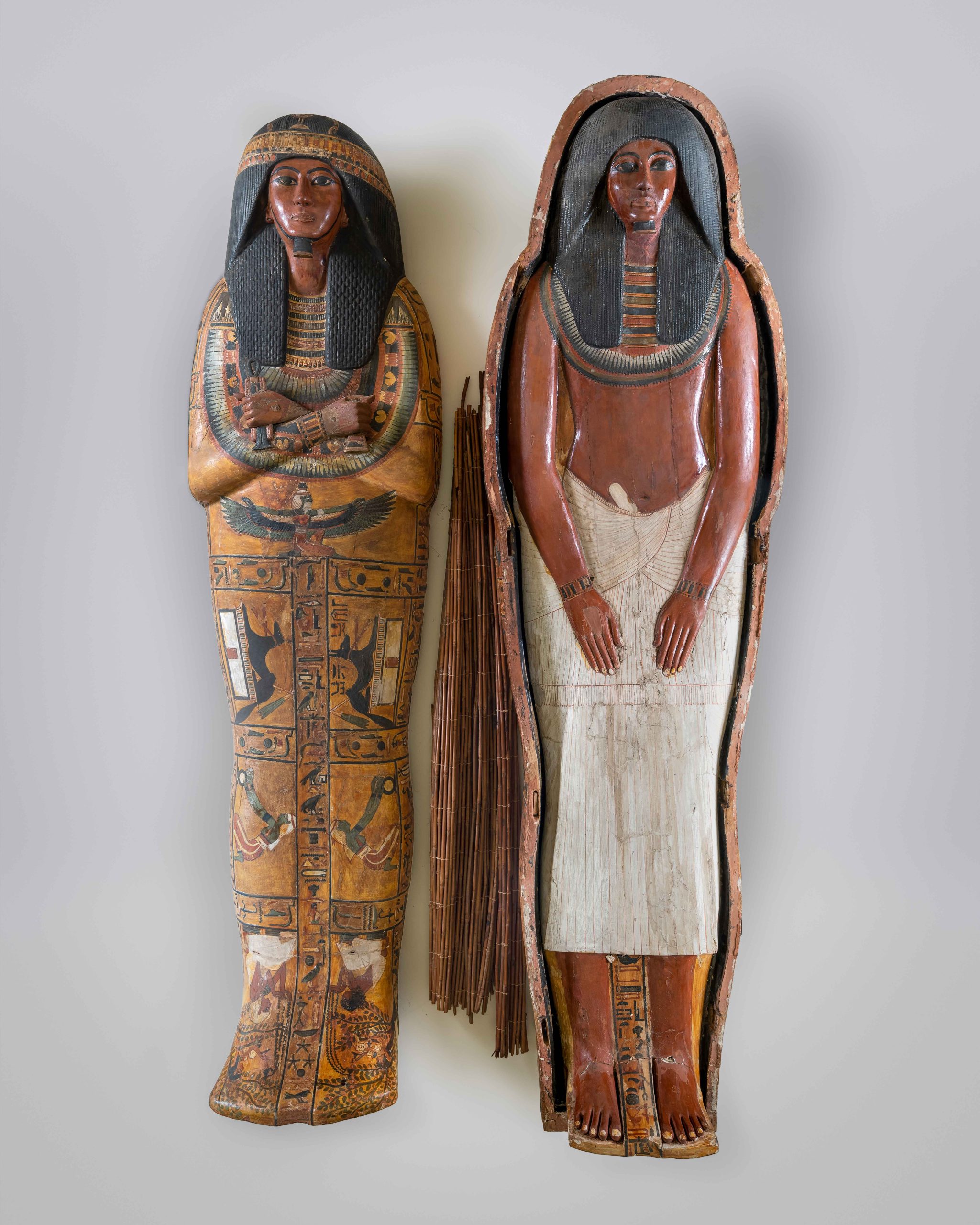
The coffin of Sennedjem
He was a third-generation craftsman who lived in the village of Deir Al Madina. He was amongst the craftsmen who worked on the decoration of the royal tombs such as the tomb of King Seti I and Ramses Il in the valley of the kings, he built a small house in front of his tomb in Deir Al Madina.
The inner coffin of Sennedjem - where his mummy was placed - decorated with funerary scenes of the protective goddesses from the Book of the Dead, while Sennedjem receiving provisions from the Goddess of the tree, and the lid depicts him in his worldly clothes with long kilt of white linen.
New Kingdom, 19th Dynasty (1295 - 1186 BC, Deir el-Madina)

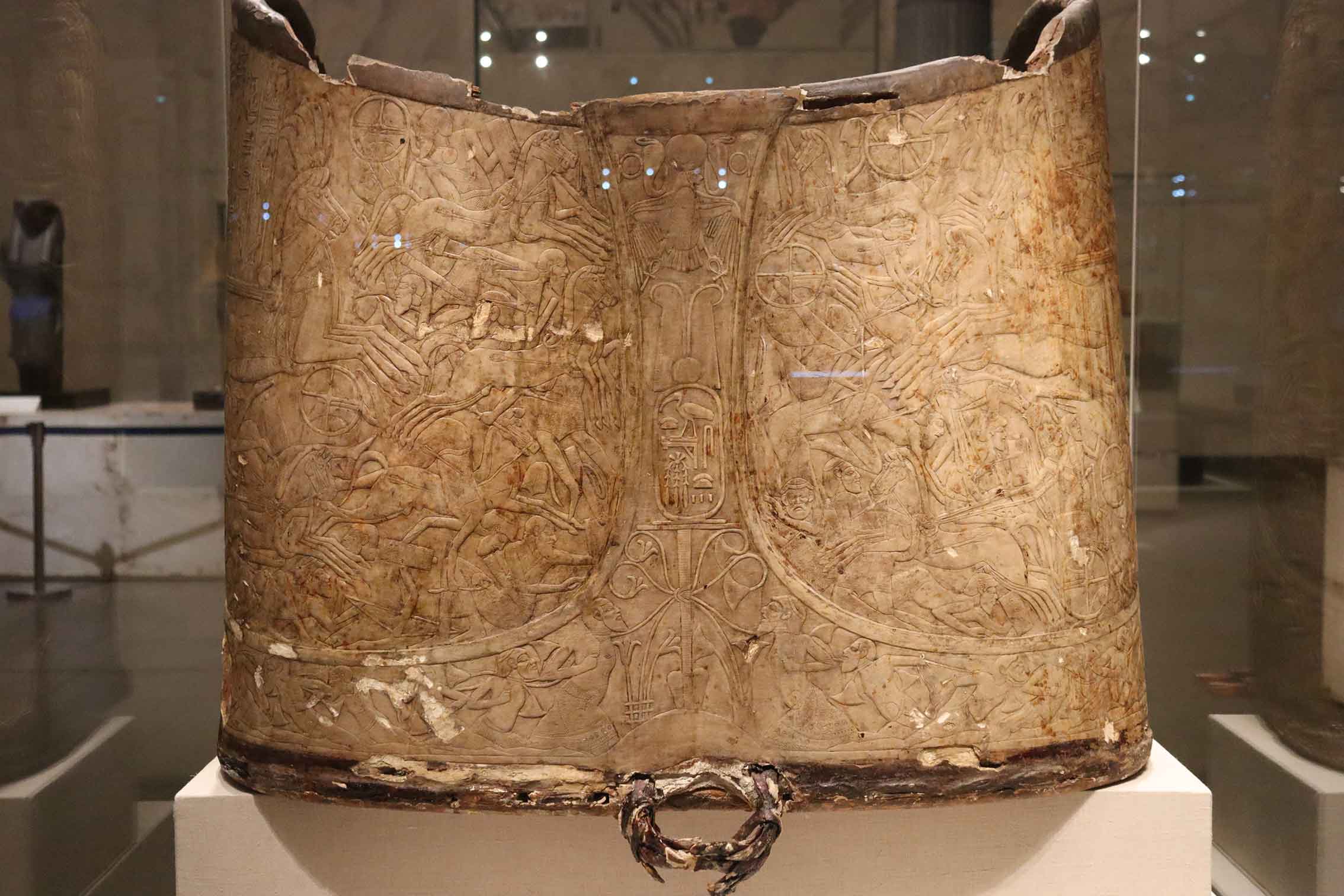
The Chariot of Tohotmus IV
An opulent, gilded chariot, meticulously crafted from wood and bearing testament to the king's mighty power and triumphant achievements.

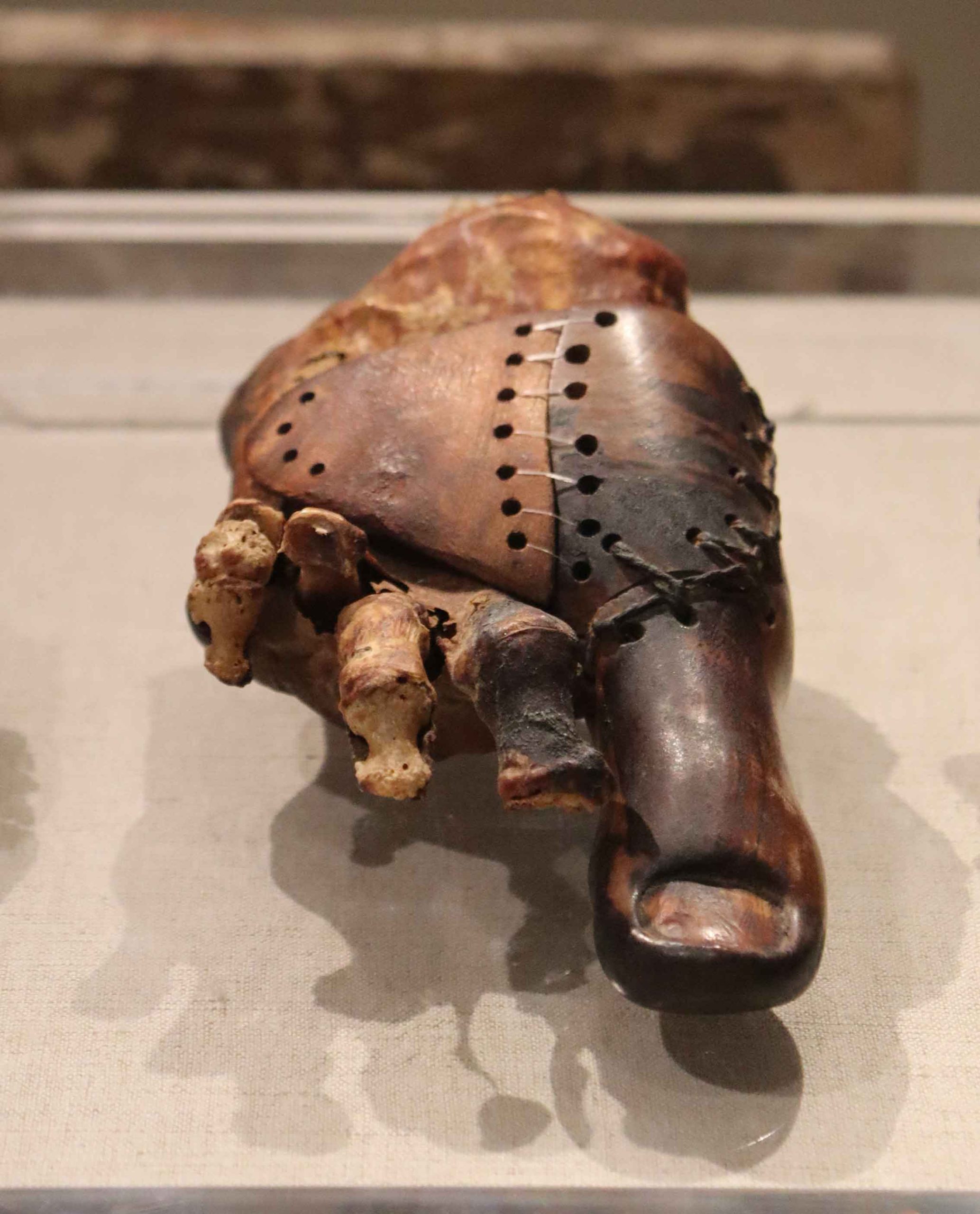
The prosthetic toe
This remarkable artifact was once the prosthetic toe of Tabaket en Mut from Luxor, who lived approximately around 1000 BC, shedding light on ancient medical practices from the past.

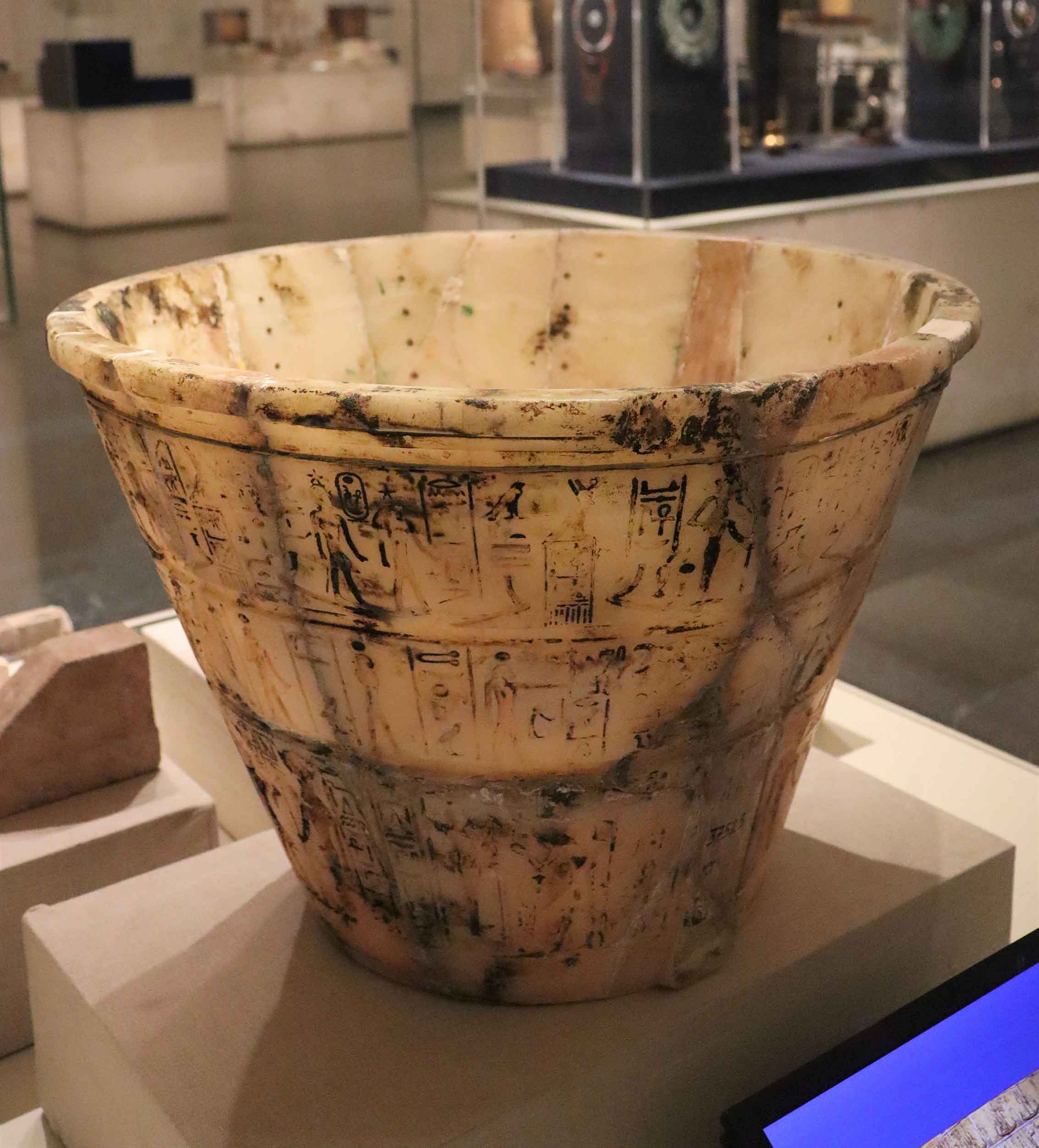
Water clock from Amenhoteb III
An exquisite alabaster clock adorned with inscriptions that unveil the secrets of the Egyptian Zodiac, offering a captivating glimpse into the meticulous timekeeping methods of the era.


Nilos
The statue is a personification of the Nile in the Roman Empire and is the origin of the name Nile. Nilos is usually depicted as an old man surrounded by 16 children, symbolizing the optimal Nile flooding and the 16 songs sung by children to celebrate the flood. The songs were a tradition that dated back to as early as 2000 BC. Nilos is always depicted leaning on a hippopotamus which chosen by the Romans to symbolize Africa, as it reflects the origin of the _Nile River and the wilderness of life in Africa


Dush treasure from the Roman Empire 300AD
Unearthed in the Dush Citadel, this hidden treasure, believed to be the possession of the citadel's leader, is a tangible link to the riches of the Roman Empire. Dating back to around 300 AD, it invites us to unravel a compelling historical puzzle.


Dome found in Baouweet
This supporting dome, discovered in the heart of Baouweet, where a wealth of beautiful Coptic artifacts resides, serves as an architectural testament to the craftsmanship of the past, preserving the legacy of a unique cultural and artistic heritage.

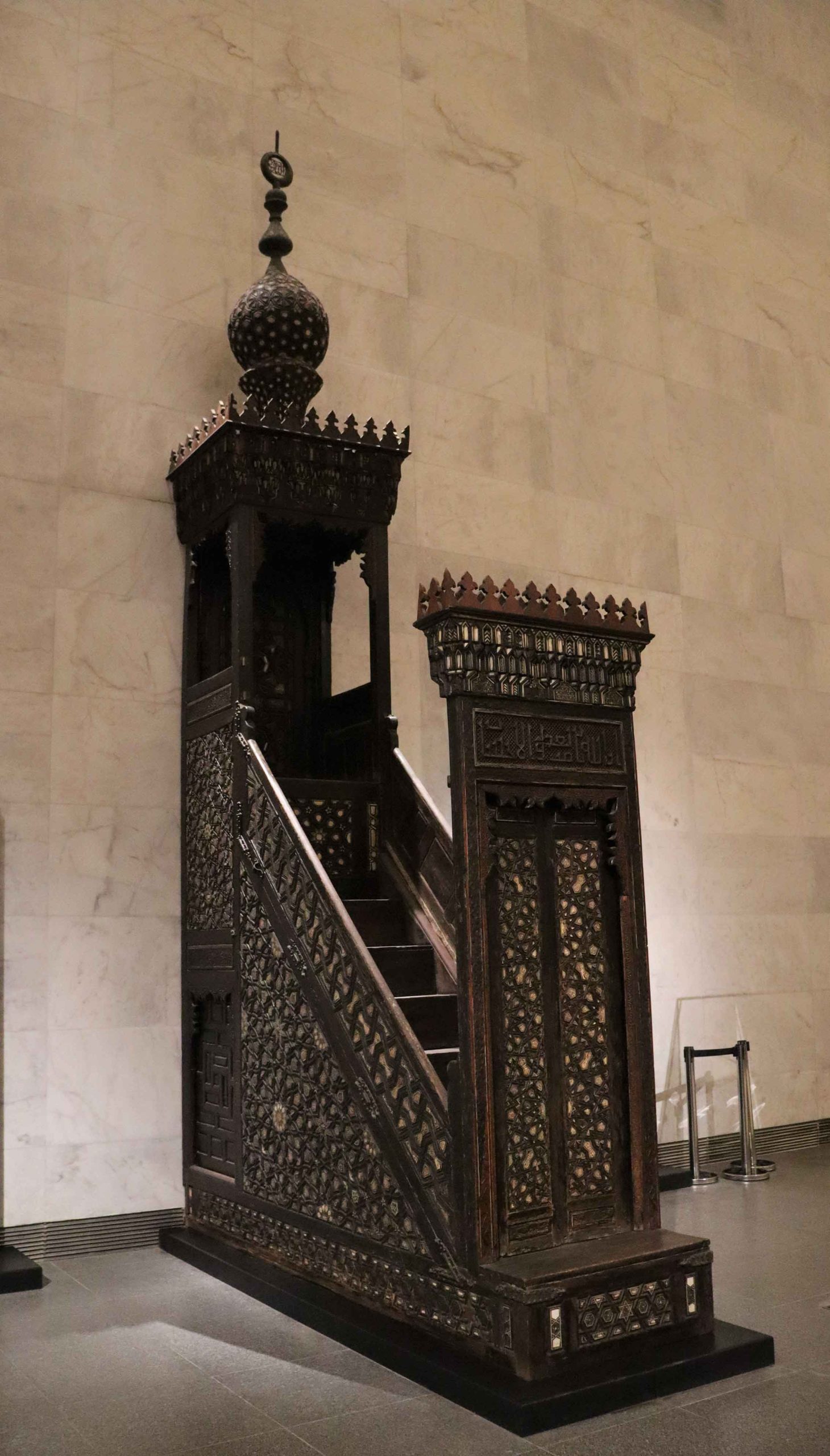
Minbar Aboubakr Ibn Mizhar
A significant historical artifact, the minbar originates from Abu-Bakr ibn Mizhar's mosque, where the revered sheikh delivered Friday sermons.

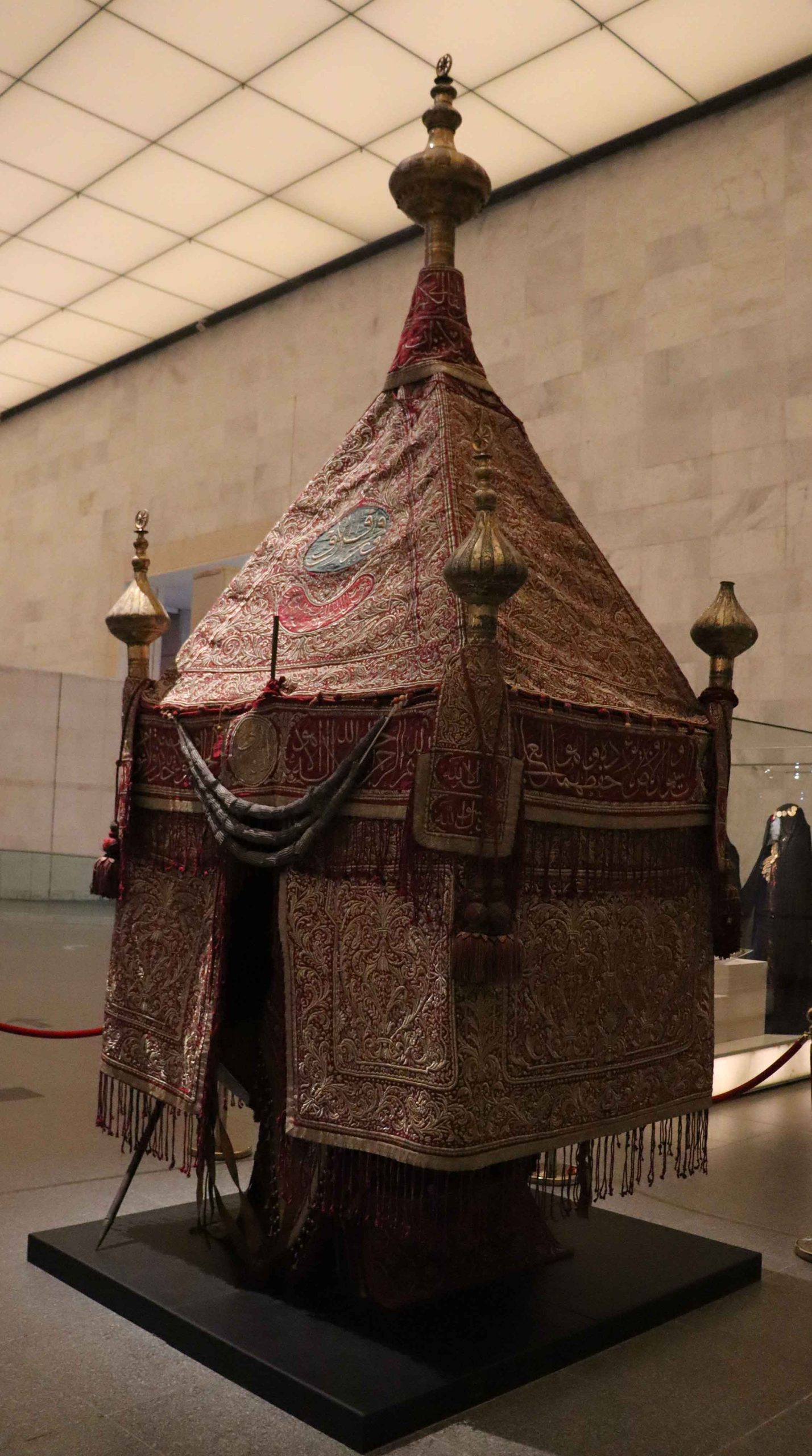
The Mahmal from King Farouk
This distinctive tent, transported by the lead camel in the procession of the Kiswa from Egypt to Saudi Arabia, holds a place of deep reverence, representing a sacred journey that unfolds over approximately four months.

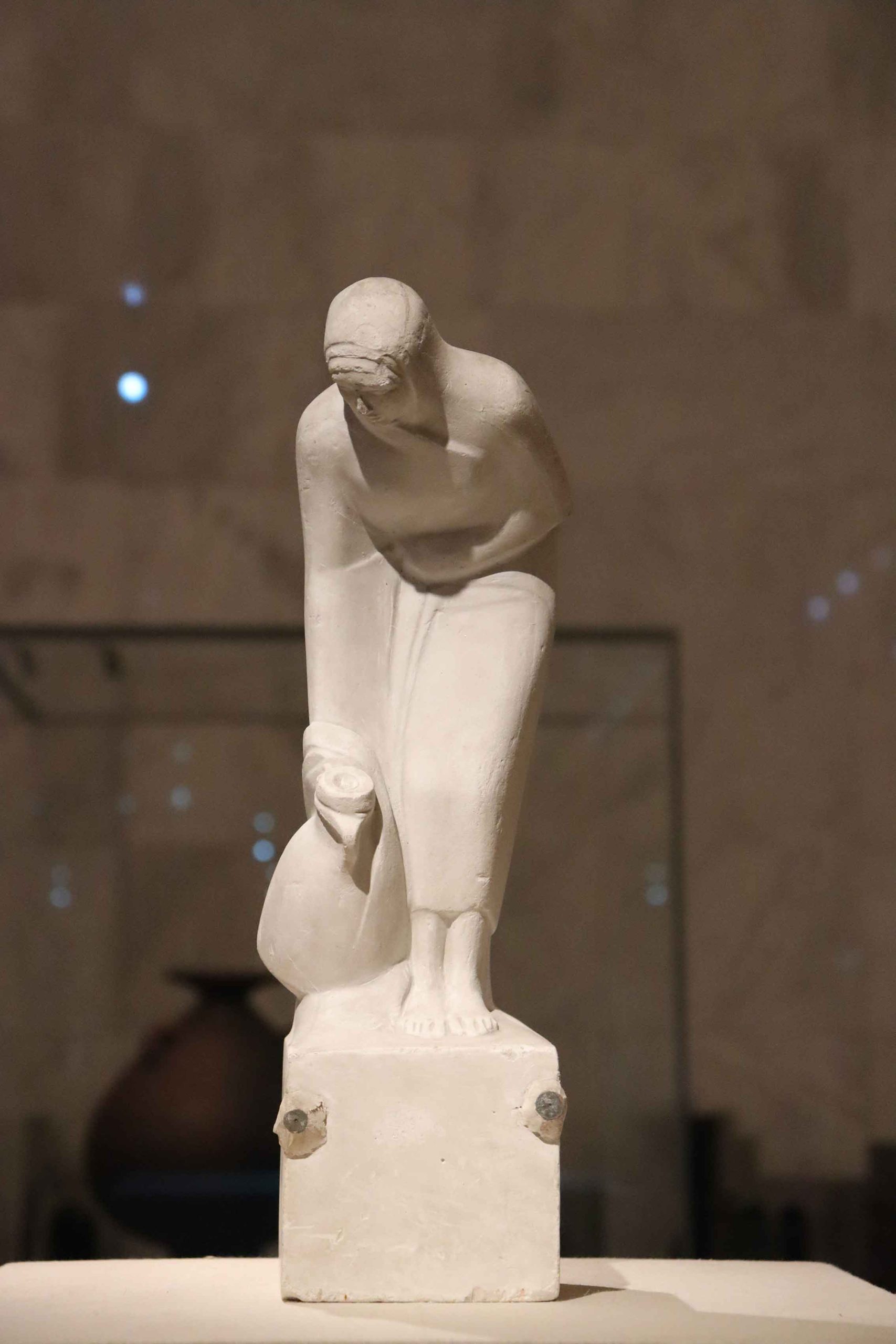
Al Falaha Statue by Mahmoud Mokhtar
A timeless tribute to the pivotal role of women in Egyptian society, this masterpiece by pioneering sculptor Mahmoud Mokhtar.

